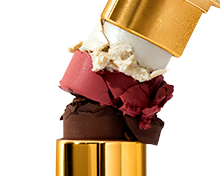The New Oil Boom - Skin Saving Jojoba

Check your medicine cabinet and I’ll bet there are products with jojoba in there, whether you realize it or not. The hydrating antimicrobial oil is a low-key workhorse in countless skincare products, though it often gets overshadowed by trendier ingredients. Even if you’ve heard of jojoba, you probably don’t know where it comes from—or how it’s pronounced (for the record: ha-ho-ba). I certainly didn’t until the world’s biggest supplier and producer, Vantage, invited me to Arizona to discover its origins.
The oil (technically a liquid wax) comes from the seeds of a shrub that’s been big in the wellness world since the 18th century. Back then, Native American tribes in the Sonoran Desert used jojoba to heal skin conditions and wounds, and religious leaders traveling through the area found it to be an effective cure for venomous bites. Today, the wonder oil’s biggest feat is improving the appearance of acne. Its consistency is so similar to the oils produced by human skin that it’s thought to signal to your complexion to balance itself and produce less sebum.
To find out why we’re not all bathing in this stuff, I drive two hours southwest of Phoenix, where Vantage’s Desert Whale Jojoba Farm appears like a mirage with green, spindly shrubs stretching for acres. I don protective eye gear as the dust kicks up and follow Amber Schwartz, Vantage’s technical director of jojoba business, as she walks among rows littered with fallen seed pods. Each February, the farmers turn on a sustainable drip irrigation system to encourage the plants’ spring awakening. And there’s no need for bees to get pollination going: The wind alone carries the pollen between male and female flowers. Around August, the olive-size pods drop to the ground and harvesters gather them up to be collected and pressed. Deer are frequent visitors, but Schwartz says there’s no risk they’ll snack on the harvest; the seeds contain simmondsin, a naturally occurring compound that makes them taste bitter.
Jojoba may not look like much, but each seed is about 50-percent oil. A farmer demonstrates by dropping one into a mobile press. (The real extraction happens miles away in high-tech cold-pressing machines.) Sure enough, a stream of golden liquid sputters into a bucket. I dip in a finger and find it’s lighter and more slippery than olive oil. I massage it into my dry hands, and it absorbs within seconds. This elixir did have a hot moment among skincare gurus in the ‘80s and ‘90s, so why doesn’t it have the same lasting, cult-like following as, say, coconut or argan oil has today? Schwartz chalks that up to misconception. “Many people think oils are too heavy to use on the face; they may not know how lightweight and skin compatible jojoba is,” she says. While some hair products tout its benefits (Hask and SheaMoisture use jojoba), it’s just starting to get top billing in skincare. (The Honest Company and Kora Organics make moisturizers with jojoba oil.)
That night, I give myself the head-to-toe experience: Ogee’s jojoba-infused makeup wipes dissolve my mascara almost instantly, and its face serum replenishes the moisture the dry Arizona air has siphoned from my cheeks. After a bath, I rub a few drops of the pure canary-colored oil through my hair as an overnight treatment, and I’m rewarded with a glossy ponytail in the morning. I also notice that a tiny breakout I had along my hairline looks less inflamed. Having struck oil in the desert, Arizona is ushering in the next big boom in beauty.

